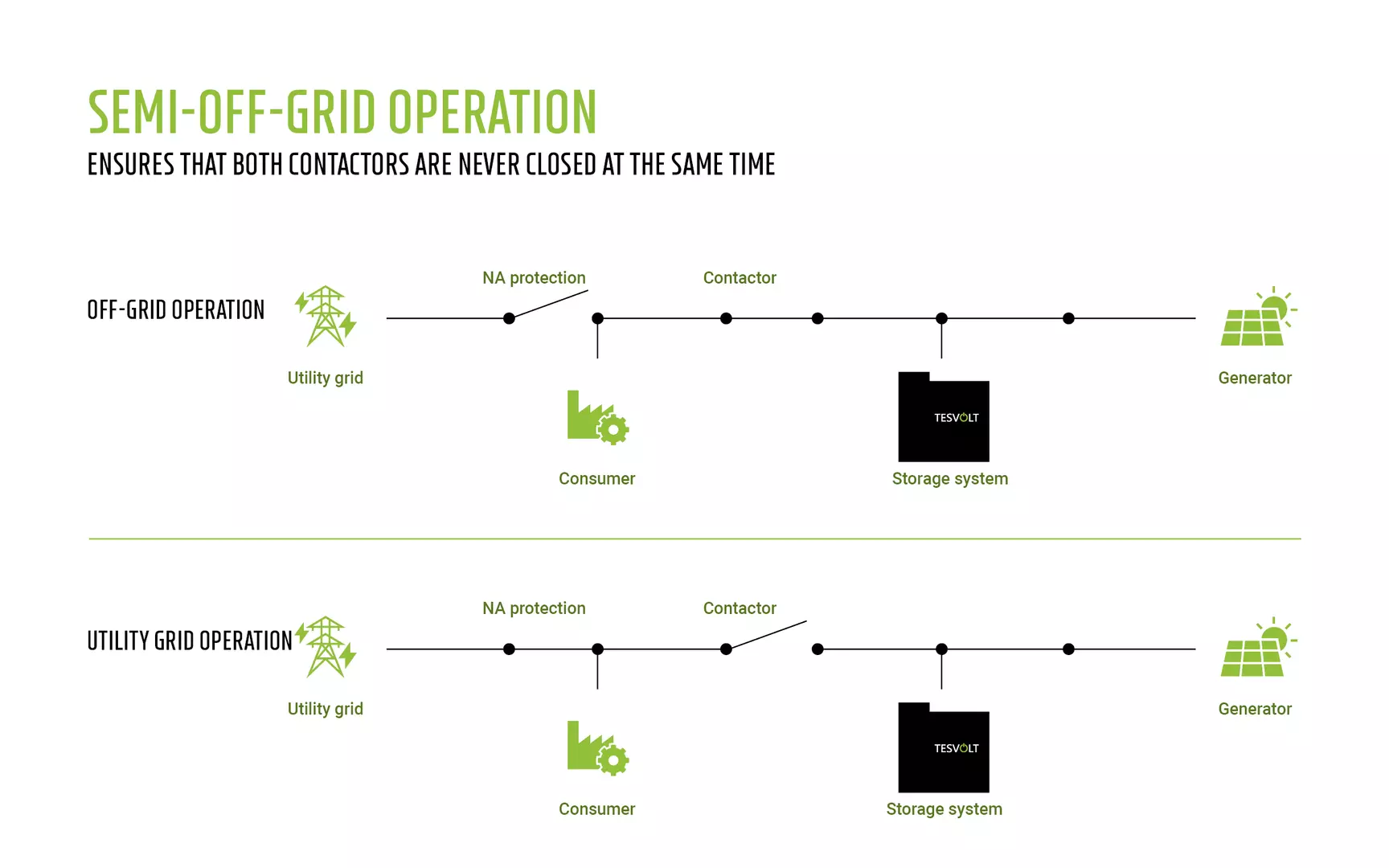EXPANDING CAPACITY – NOT THE GRID
Semi-off-grid operation means that electricity can be drawn from the grid, but is not fed into the grid. This may be necessary if a renewable energy installation is to be expanded to such an extent that its feed-in capacity would overload the regional grid. Grid operators can block the construction of such an extension unless the owner can guarantee that their installation will never feed electricity into the public grid. This is the best alternative, because the expensive process of expanding the grid connection usually isn’t an economical option.
So a facility operator can use the TS-I HV 80 and VAS Energy Manager, for example, in semi-off-grid operation to install PV installations or wind turbines with any capacity. The VAS storage system uses a double protective circuit to ensure that electricity from the generation modules can never be fed into the public grid.
YOUR BENEFITS
- Large generator facilities can be operated anywhere, irrespective of the local utility grid
- High cost savings, since demand is covered by self-consumption
- No need to pay the surcharge set out in the German Renewable Energy Sources Act

 Tiếng Việt
Tiếng Việt 中文 (中国)
中文 (中国)
